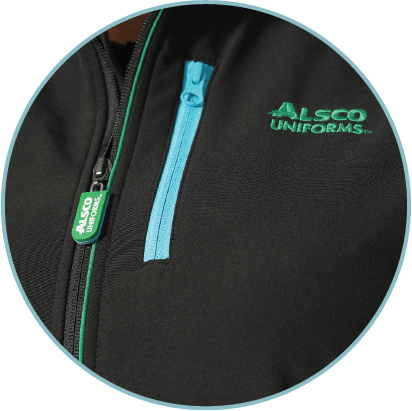Implementation and Results
The new uniform range includes a regular polo, sleeveless polo, soft shell jacket, vest, and headwear. The design features the Alsco Uniforms green and Fresh & Clean blue accents, including contrast piping and panels, a double-sided zipper, and embroideries.
The project successfully met its three main objectives:
1. Employee Pride and Practicality:
- Employees now have a uniform they can wear with pride, which is practical and fit for purpose across different climates. The cooling finish on the polo shirts has been particularly well-received, enhancing comfort in warmer conditions.
2. Unified Brand Identity:
- The integration of the Alsco Uniforms and Fresh & Clean brands into a single uniform has created a consistent look across New Zealand and Australia. This unified appearance strengthens brand identity and fosters a sense of belonging among employees.
3. Sustainability:
- The use of recycled polyester in the uniform range demonstrates Alsco Uniforms’ commitment to sustainability. This initiative not only reduces environmental impact but also sets a benchmark for future projects.